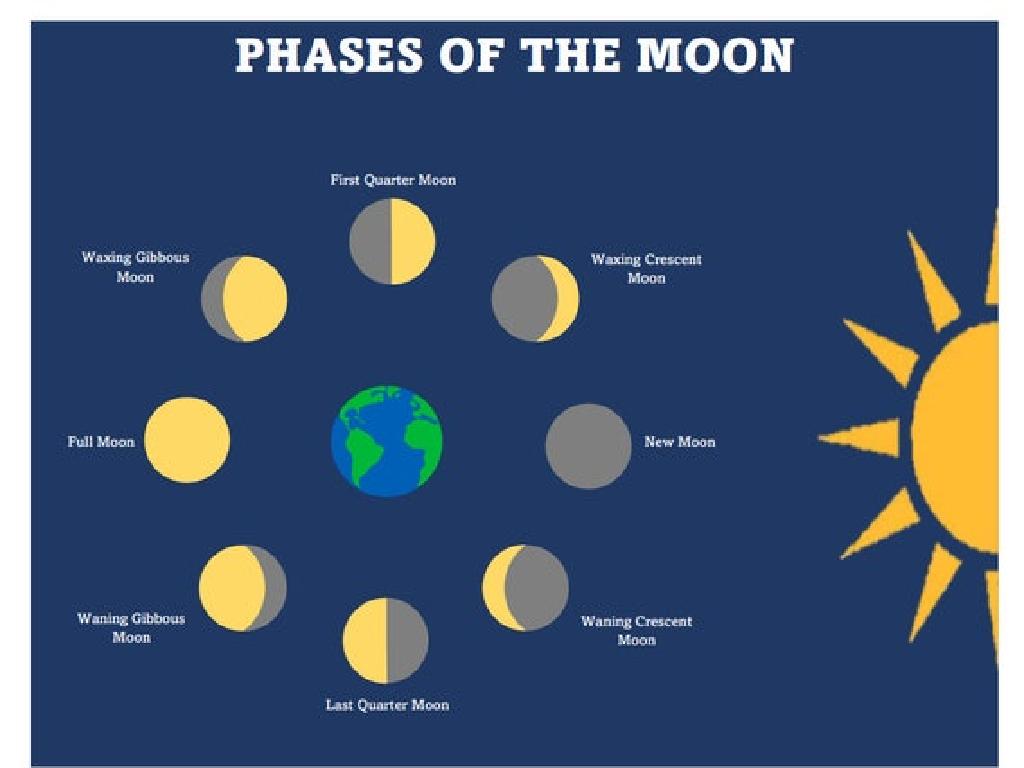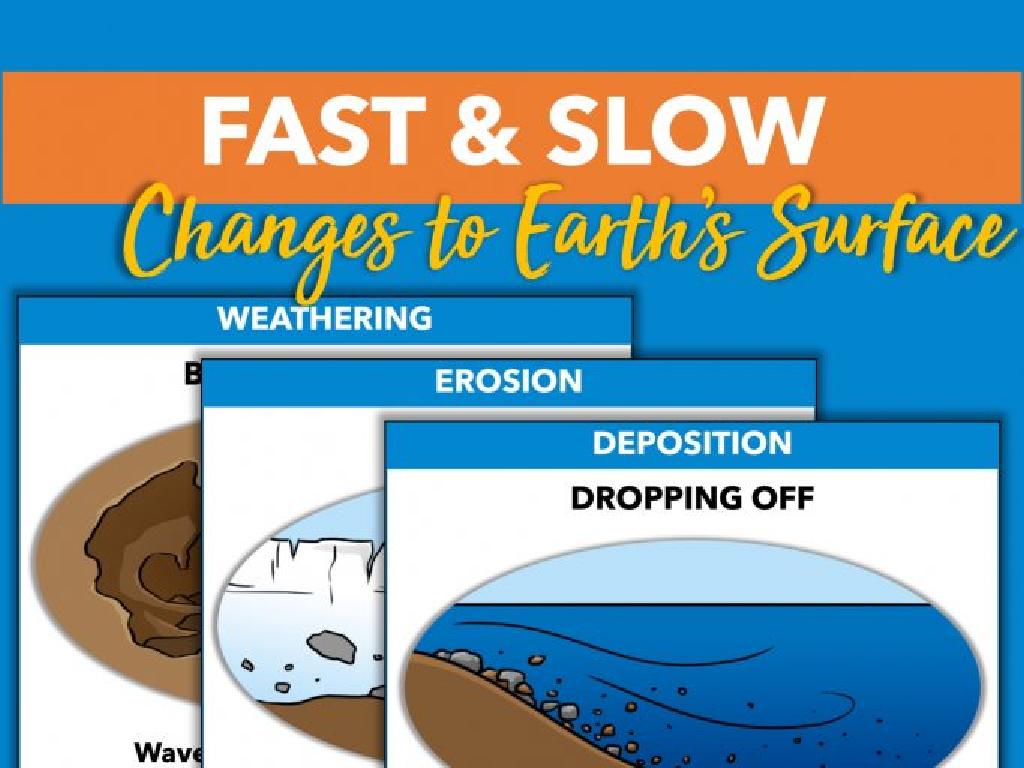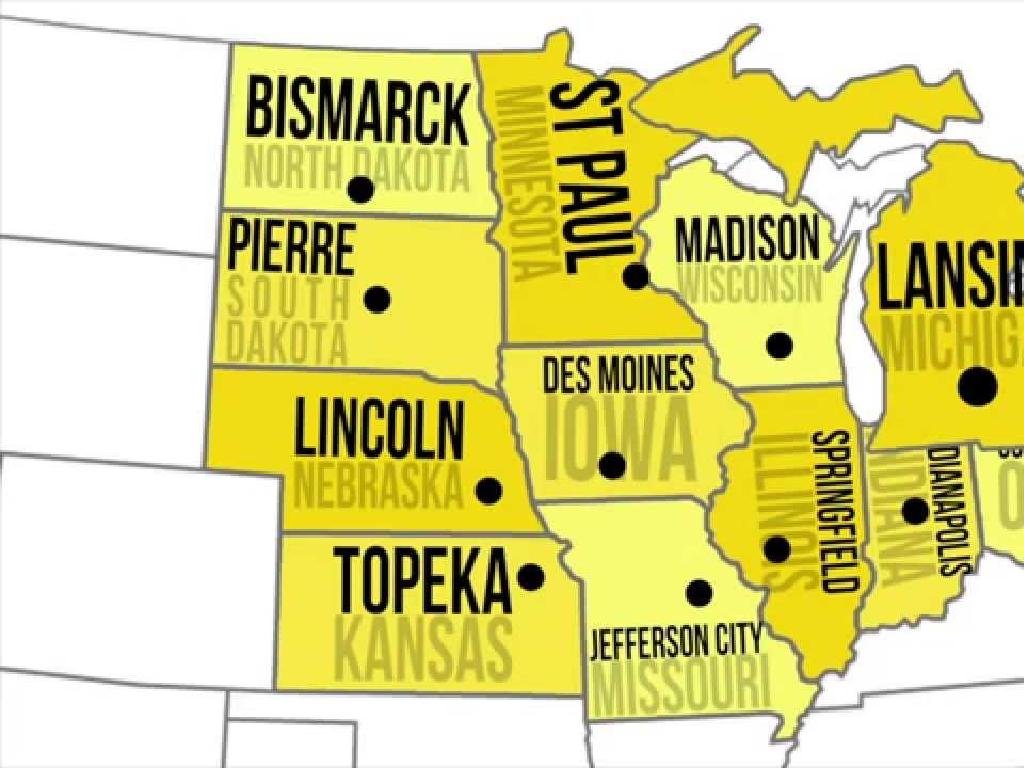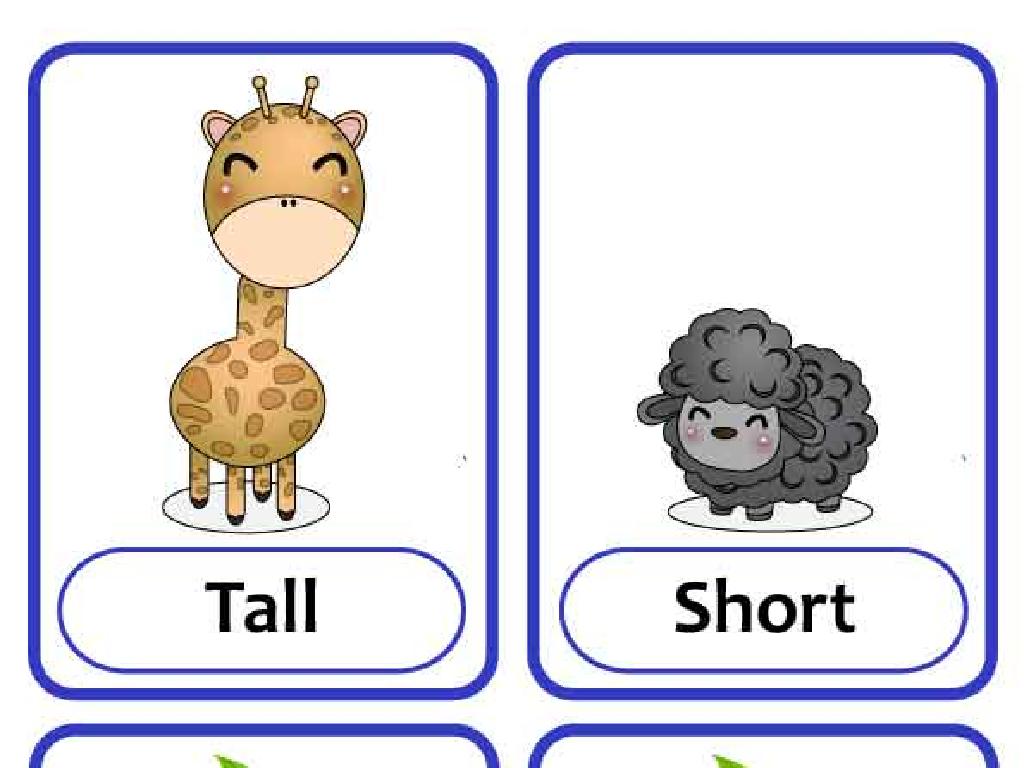Label Parts Of Rock Cycle Diagrams
Subject: Science
Grade: Eighth grade
Topic: Rocks
Please LOG IN to download the presentation. Access is available to registered users only.
View More Content
Welcome to the Rock Cycle!
– Earth’s diverse rock types
– Igneous, sedimentary, metamorphic
– The Rock Cycle explained
– A continuous series of processes
– Components of the cycle
– Magma, erosion, sedimentation, pressure
– Today’s lesson overview
|
This slide introduces students to the concept of the rock cycle and the various types of rocks found on Earth. Begin by discussing the three main rock types: igneous, sedimentary, and metamorphic. Explain that the rock cycle is a continuous process that describes the transformation of rocks through various geological processes. Highlight key components such as the formation of magma, erosion, sedimentation, and the effects of pressure and heat. Use this overview to set the stage for today’s lesson, which will delve deeper into each part of the rock cycle and how rocks can change from one type to another over time. Encourage students to think about how the Earth’s surface is constantly evolving through these processes.
Types of Rocks and the Rock Cycle
– Igneous Rocks: Earth’s fiery creators
– Formed from cooled magma or lava
– Sedimentary Rocks: Time’s storytellers
– Created from compacted sediment layers
– Metamorphic Rocks: Altered by pressure
– Changed by heat and pressure underground
– Interconnections in the rock cycle
|
This slide introduces students to the three main types of rocks and their formation processes, which are part of the rock cycle. Igneous rocks form from the solidification of magma or lava, exemplified by granite and basalt. Sedimentary rocks result from the accumulation and cementation of mineral and organic particles, like sandstone and limestone. Metamorphic rocks arise from the transformation of existing rock types through heat and pressure, with examples including slate and marble. Emphasize the dynamic nature of the rock cycle, where rocks can transition between types through various geological processes. Encourage students to think about how the Earth recycles materials and the vast timescales involved in these transformations.
The Rock Cycle Explained
– Rocks’ continuous journey
– Key processes: melting, cooling
– Heat melts rocks into magma, which cools to form igneous rocks.
– Erosion, compaction, metamorphism
– Rocks break down into sediment, then compact into sedimentary rocks.
– Transition between rock types
– Intense heat/pressure changes rocks into metamorphic.
|
This slide introduces the concept of the rock cycle, emphasizing the continuous and dynamic nature of rock transformation. Highlight the key processes involved: melting (due to heat beneath Earth’s surface), cooling (forming igneous rocks as magma solidifies), erosion (breaking rocks into smaller pieces), compaction (sediments pressed together), and metamorphism (alteration by heat and pressure). Explain how these processes contribute to rocks changing from one type to another, such as sedimentary rock becoming metamorphic rock through heat and pressure. Use diagrams to illustrate the cycle, and provide examples of each rock type. Encourage students to think of the rock cycle as a slow but constant process that recycles Earth’s materials in different forms.
Labeling the Rock Cycle: Key Processes
– Identify cycle components
– Understand weathering, erosion
– Breakdown and transport of rocks
– Formation of sedimentary rocks
– Layers compacted by pressure
– Creation of metamorphic rocks
– Heat, pressure alter rock structure
– Cooling magma forms igneous
– Magma cools, solidifies underground or as lava
|
This slide aims to guide students through the main processes involved in the rock cycle. Start by identifying the key components of the rock cycle diagram. Explain how weathering and erosion play a crucial role in breaking down rocks and transporting sediments. Discuss the formation of sedimentary rocks through the compaction and cementation of these sediments. Highlight the creation of metamorphic rocks when existing rocks are subjected to intense heat and pressure, altering their structure. Finally, describe how igneous rocks form from the cooling and solidification of magma or lava. Encourage students to label these processes on a rock cycle diagram in their notebooks, and provide examples of each rock type for a comprehensive understanding.
Real-World Rock Cycle Examples
– Igneous rocks: Granite, Basalt
– Formed from cooled magma or lava
– Sedimentary rocks: Limestone, Sandstone
– Created from particles of other rocks
– Metamorphic rocks: Slate, Marble
– Transformed by heat and pressure
|
This slide provides concrete examples of the three main types of rocks to help students better understand the rock cycle. Igneous rocks like granite and basalt are formed from the solidification of magma or lava. Sedimentary rocks such as limestone and sandstone are made from the accumulation and compaction of sediment. Metamorphic rocks, including slate and marble, are created when existing rocks are subjected to high heat and pressure, altering their structure. Encourage students to bring in samples or pictures of these rocks for a hands-on learning experience. Discuss where these rocks might be found in the local environment or in everyday uses, such as granite countertops or marble flooring.
Class Activity: Label the Rock Cycle
– Receive your rock cycle diagram
– Use today’s lesson to label it
– Identify and label parts like magma, sediment, metamorphic rock, etc.
– Pair up for the activity
– Discuss and complete with your partner
– Collaboration can lead to better understanding and retention
|
This activity is designed to reinforce the students’ understanding of the rock cycle by having them label a diagram with the key components discussed in the lesson. Distribute blank diagrams to each student and instruct them to use the knowledge they’ve gained from today’s class to accurately label each part of the cycle. Encourage students to work in pairs to foster collaborative learning and discussion, which can help clarify any uncertainties and solidify their grasp of the concept. As a teacher, circulate the room to offer guidance and answer questions. Possible variations of the activity could include having each pair present their labeled diagram to the class, creating a gallery walk of completed diagrams, or even having students create their own rock cycle diagrams from scratch as an extension activity.
Rock Cycle Review & Q&A Session
– Recap the rock cycle key points
– Review how igneous, sedimentary, and metamorphic rocks form and transform
– Open floor for student questions
– Address rock cycle confusions
– Clarify any part of the cycle that’s unclear, like how pressure creates metamorphic rocks
– Ensure understanding before proceeding
– Check if students can label diagram parts and explain processes
|
This slide is aimed at reinforcing the students’ understanding of the rock cycle. Begin with a brief recap of the key points, such as the formation of the three main rock types and the processes that contribute to the cycle, including melting, cooling, erosion, compaction, and heat and pressure. Open the floor to student questions, encouraging them to ask about any aspect of the rock cycle they find confusing. Address these questions with clear explanations, and if necessary, revisit the diagram to illustrate your points. The goal is to ensure that all students have a solid grasp of the rock cycle components and can confidently label and explain each part of the diagram. This interactive session will help solidify their knowledge and prepare them for any assessments on this topic.
Homework: Explore Local Rock Formations
– Research a local rock formation
– Identify rock types present
– Look for igneous, sedimentary, and metamorphic rocks
– Write a report on rock cycle stages
– Describe processes like weathering, erosion, or metamorphism
– Share findings in class
|
This homework assignment is designed to give students a practical understanding of the rock cycle by researching a local rock formation. Students should identify the types of rocks present, such as igneous, sedimentary, or metamorphic, and write a short report detailing the stages of the rock cycle they observe, including any evidence of weathering, erosion, deposition, compaction, cementation, or metamorphism. Encourage students to use diagrams and photographs to support their findings. This activity will help them connect theoretical knowledge from the classroom with real-world geological processes. In the following class, students will have the opportunity to share their research and learn from their peers’ observations.






